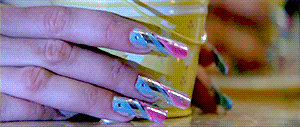Sign Language Dilemmas – what does the Interpreter wear?

People do not always understand the need for BSL Interpretation (pen and paper works a treat most of the time doesn’t it?) and the role of the Interpreter can be an unwelcome addition/intrusion to the communication process. So, rightly or wrongly, the Interpreter will often become the benchmark and the deaf client will be judged accordingly.

So, as BSL interpreters and professional CSW's, we understand that first impressions are important and that we need to present a professional persona:
-
because the way we dress will impact upon how we are perceived and in turn how our clients are perceived
-
because our appearance could be a distraction and draw attention away from the interpretation process
-
for clients who may also have a visual impairment, this is even more important – incorrect dress code can impair the interpretation process and detract from the smooth flow of information.
Interpreters provide a valuable service that facilitates communication between deaf individuals using sign language and individuals utilising spoken language. Professional interpreters are advised to follow guidelines of appearance and behaviour that may be adapted to suit specific bookings and working environments.
Let's have a look to the main dress code "Do's and Don'ts" for sign language interpreters:
Interpreter Attire Basics - WHAT TO WEAR

-
An interpreter should carefully choose their clothing and appear in an "unobtrusive manner". We are all taught to wear black during our Interpreter Training/Education Programs, although at Deaf Umbrella we recommend that interpreters wear muted clothing that contrast with their skin tone. Sign language interpreters with fair skin wear dark clothing. This may include black, navy blue, dark grey, or olive green. Sign language interpreters with darker complexions wear shades of beige, pastel or cream.
-
As sign language is used around the face and chest area, it is vital to wear solid colour tops.
-
Both men and women are expected to wear long trousers rather than shorts, while women are allowed the additional option of skirts or dresses.
-
Both genders should keep their hair tidy and away from the face to allow for clear reading of the facial expressions.
BIG NO-NO

-
Certain "shiny" fabrics that can increase eye strain in a bright room, such as silk, satin or polyester.
-
Printed and busy patterns such as stripes, flowers, polka dots, plaids prints... should also be avoided as they are a visual distraction and make the eyes tired.
-
Short skirts or dresses with high slits are never considered appropriate professional attire.
-
Facial hair for men such as moustaches or beards needs to be kept neat and trimmed. Long hair should be put up in a neat fashion to keep it out of the way.
-
In most professional interpreting situations, casual clothing eg shorts or anything denim, is not appropriate.
-
Flashy jewellery, long earrings and loud nail polish should be avoided.
-
Some service providers do not allow visible tattoos on their interpreters, while others expect tattoos to be covered when possible.
-
Vest/low cut tops, shorts or short skirts are NEVER okay.
Dress Code Alterations for Jobs
Depending on your interpreting job, you may need to alter your dress code to ensure it is appropriate for each situation. For example, a formal meeting or possible Court appearance would certainly require a suit. A hospital appointment may even need “scrubs” and certain bookings may need PPE/stout or steel-toed boots.
Ostentatious manicures and jewellery should be avoided at all times.

IN A NUTSHELL
Keep your outfit modest and comfortable and use your professional judgement to appropriately dress for each individual assignment.
Many deaf clients will be relaxed about the Interpreter dress code, but equally many require high professional standards. If in doubt, err on the side of caution. At each booking, we are representing our client and it is that they will be judged accordingly.
Please always remember that some of the Deaf clients might have low vision, so we have to be even more careful about what we wear for them.


